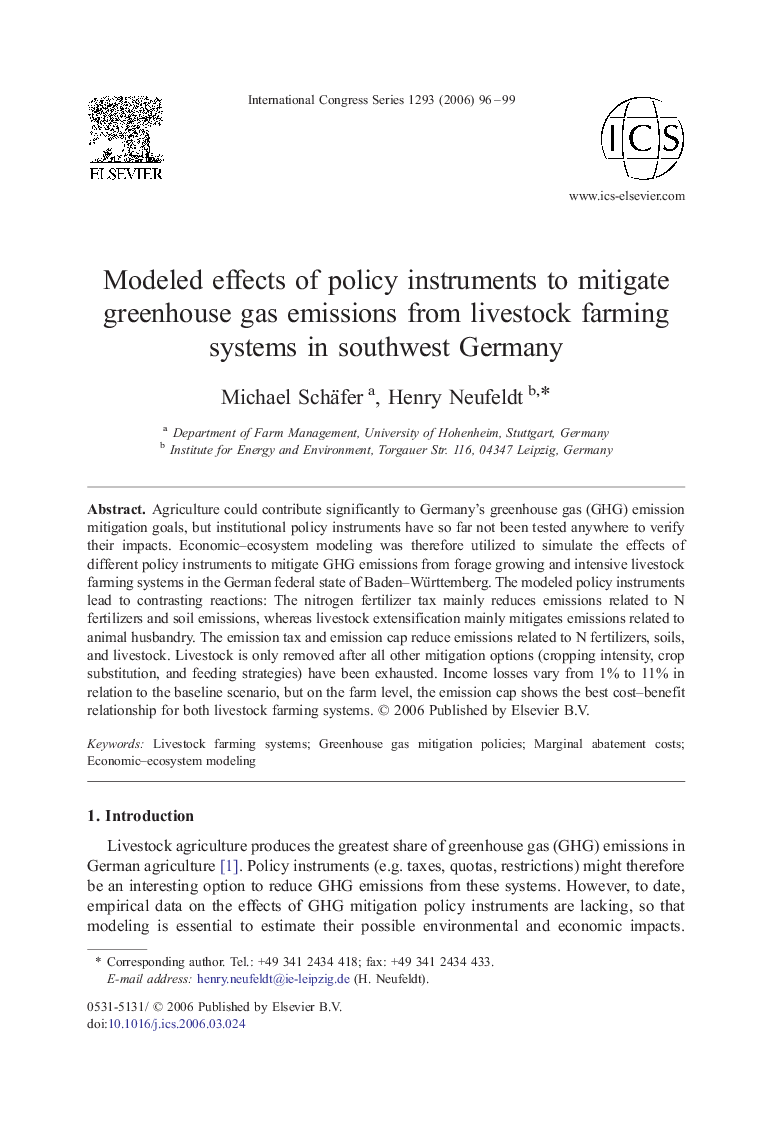| Article ID | Journal | Published Year | Pages | File Type |
|---|---|---|---|---|
| 2577063 | International Congress Series | 2006 | 4 Pages |
Agriculture could contribute significantly to Germany's greenhouse gas (GHG) emission mitigation goals, but institutional policy instruments have so far not been tested anywhere to verify their impacts. Economic–ecosystem modeling was therefore utilized to simulate the effects of different policy instruments to mitigate GHG emissions from forage growing and intensive livestock farming systems in the German federal state of Baden–Württemberg. The modeled policy instruments lead to contrasting reactions: The nitrogen fertilizer tax mainly reduces emissions related to N fertilizers and soil emissions, whereas livestock extensification mainly mitigates emissions related to animal husbandry. The emission tax and emission cap reduce emissions related to N fertilizers, soils, and livestock. Livestock is only removed after all other mitigation options (cropping intensity, crop substitution, and feeding strategies) have been exhausted. Income losses vary from 1% to 11% in relation to the baseline scenario, but on the farm level, the emission cap shows the best cost–benefit relationship for both livestock farming systems.
